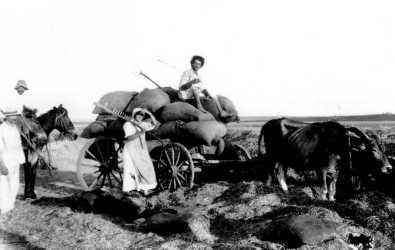Folklore is a complex mix of the customs and traditions of a culture, that develop and change over the years. It consists of folktales, myths, legends, sayings, nursery rhymes, jokes, riddles, superstition, local and ethnic food, folk dancing, folk costumes and local art. The beginnings of Jewish folklore can be found in the Bible and in stories from the Midrash.
The word “folklore” was translated into Hebrew as yeda am (“knowledge of the people”). A prominent researcher of Jewish folklore was Dr. Yom-Tov Lewinsky. He came to Palestine in 1935, and was one of the founders of “The Folklore Society in Israel” which began operating in 1942. This society documented Jewish folklore around the world and in Palestine. The Folklore Society decided to publish a journal that would serve as a platform for publications on Jewish folklore. In 1948 the first edition of the journal “Yeda-Am” was released, edited by Lewinsky.
Folklore expands and changes over time, and so, during the years of settlement in Palestine, at the beginning of  the twentieth century, new and unique aspects of Israeli folklore were noted. One example is the stories about the Bilu’im, the first group of Zionist immigrants that arrived in Eretz Israel in 1882. They settled in Palestine under difficult conditions – water shortage, illness and lack of money. However, they clung on to their goal to settle in Palestine. Their stories acquired the status of myths and found their way into the Journal “Yeda-Am”. Amnon Horvits, a Bilu himself and one the heads of the Jewish settlement during the First Aliyah, wrote a column, “What the Bilu’im and Their Friends Told Me”. The column included reminiscences and traditions from the life of the Bilu’im.
the twentieth century, new and unique aspects of Israeli folklore were noted. One example is the stories about the Bilu’im, the first group of Zionist immigrants that arrived in Eretz Israel in 1882. They settled in Palestine under difficult conditions – water shortage, illness and lack of money. However, they clung on to their goal to settle in Palestine. Their stories acquired the status of myths and found their way into the Journal “Yeda-Am”. Amnon Horvits, a Bilu himself and one the heads of the Jewish settlement during the First Aliyah, wrote a column, “What the Bilu’im and Their Friends Told Me”. The column included reminiscences and traditions from the life of the Bilu’im.